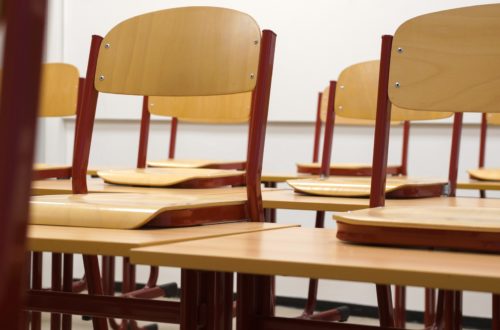
Helping Students Identify and Manage Pandemic Stress
by Jannell MacAulay, PhD, and Kendra Lowe, EdD, NCSP, LSSP
COVID remains a steady topic of discussion, but the stress associated with this pandemic is anything but steady for most families and school communities. Stress has continued to increase for all of us—children, parents, and educators—to a point of exhaustion. Many school policies continue to fluctuate regarding face masks, social distancing, and virtual learning. This relative uncertainty creates an environment ripe for anxiety in our youth.
Pandemic stress manifests in a variety of forms for students: limited in-person time with friends and extended family, cancelled travel plans, struggles with changing learning environments, loss of extracurricular activities, increased anxiety or depression—their own or within their support systems. Children and teens are particularly vulnerable to stress when faced with unpredictable and changing conditions, and they present a large spectrum of reactions. Our current environment, within and outside school, makes the challenge of balancing a student’s mental and physical wellness even more profound.
Watch for Signs of Stress
Caregivers, parents, and educators play a key role in helping students of all ages develop and exercise stress-regulating skills. The first step is to watch for specific behaviors in five key areas of development that indicate a student may be enduring severe stress:
- Physical: illness, lack of energy, increased or decreased weight, injury
- Psychological and emotional: depression, low self-esteem, anxiety, suicidal thoughts, heightened emotional responses to normal situations
- Social and behavioral: isolation, lack of interest in past activities, increased risk taking
- Cognitive: lack of educational involvement, lack of curiosity, lack of critical thinking
- Relationships: increased conflict, increased arguments, disconnectedness, loneliness
Although this list is not all inclusive, it is a starting point. Have you observed some of these behaviors in your students? If yes, have you talked with them about the stress they may be feeling? Some students may be afraid to talk to parents or teachers about their feelings or may not want to worry others. They may not realize the impact of their stress or may think the stress is normal when so many stressors are present around them.
Share Strategies for Coping
Whether or not you believe your student is experiencing stress, starting a conversation now can help them cope with current or future elevated emotions. Sharing these strategies with your student will also help you optimize your own stress management. A few ways to get started:
- Validate: Try not to tell your student what they should be feeling. Instead ask them how they actually feel, allowing them to share their emotions. Listen. Adults often feel they want to fix everything and make it better. Try not to solve a situation immediately. Let your student express their feelings the best way they know how.
- Establish boundaries: It’s normal during challenging times to let boundaries slip, thinking it will help alleviate stress. However, the opposite is true. During uncertain or highly stressful situations, giving children and teens consistent boundaries, roles, and responsibilities can help them feel safe and less confused. Promote positive behaviors by setting clear expectations and examples.
- Rise to the challenge: Young people are hyperaware of changes to their home and school environment. They often experience daily, even hourly, reminders of ways their lives have been turned upside down. Remind them that we are all facing challenges in our own way, and we shouldn’t be afraid of the difficult things we encounter in life. Every difficult circumstance prepares us to face future challenges.
- Reframe: It is easy to wallow when the world feels heavy. We have a choice about how we navigate through the current environment. Instead of getting distracted by setbacks, focus on forward movement even if it is only one step at a time. Highlight the good you see, positive recent changes (in relationships, empathy, personal growth), and the strength they’ve built as they’ve persevered through challenging circumstances.
- Recover: When the time is right, express the importance of self-care. Try different positive recovery techniques such as exercise, journaling, peer support, quiet time, breathing (mindfulness, in particular), or counseling. You can develop new, creative ways to let them express their emotions. If they are angry, get a punching bag or let them pound clay or dough. Even better, create group activities around these positive coping ideas that you can enjoy together in the classroom or at home as a family.
It’s important for your student to know they are not alone in feeling stressed. Neither are you.
School counselors, school psychologists, professional counselors, doctors, support groups, religious affiliations, friends, and family are just a few resources available to help. COVID stress is real. By using these strategies to manage it, we assist our students and ourselves.
Jannell MacAulay, PhD, is a combat veteran who served 20 years in the US Air Force as a pilot. A mother of two, Jannell is a consultant, speaker, and executive leadership coach who leads mindset workshops.
Kendra Lowe, EdD, NCSP, LSSP, is a veteran, military spouse, mom of three, and school psychologist. Her first-hand experience with the stresses of military life informed her book Milspouse Strength: Changing the Way You See and Respond to Military Life Stress.
More about supporting students in pandemic circumstances and transitions:


